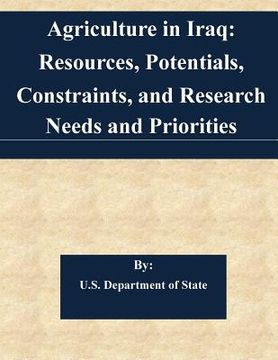Agriculture in Iraq: Resources, Potentials, Constraints, and Research Needs and Priorities (in English)
Synopsis "Agriculture in Iraq: Resources, Potentials, Constraints, and Research Needs and Priorities (in English)"
Mesopotamia, the ancient land of the "twin rivers" (the Tigris and Euphrates), with its bountiful land, fresh waters, and varying climates, contributed to the human civilization in many ways. The eastern limb of the Fertile Crescent was the cradle of the earliest known civilizations and served as the cultural heart from which the first ideas of sedentary agriculture, domestication of animals, the wheel, writing, and urban development are believed to have diffused westward to the Nile Valley and eastward to the Indus Valley. Since the beginning of recorded time, agriculture has been the primary economic activity of the people of old Mesopotamia and modern-day Iraq. Agriculture was the country's major economic activity in the 1920s; however, its contribution to the gross domestic product (GDP) dropped to 42% in 1981 and 18% in 1990. Even so, 13% of the labor force continues to be engaged in agriculture, more than in any other sector except services. The land area of Iraq is 438,317 km2, with a population of 22.8 m and a population density of 52 per km2. Arable land as percentage of total land is relatively small (12%) and agriculture, in 2001, contributed 6.1% to the GDP. More than half (53%) of the arable land is rainfed, nearly all of it in the northern uplands; however, most of the agricultural production comes from the more intensively cultivated areas of the irrigated plains. In the decade from 1977, Iraq was self sufficient in cereals, and agricultural imports amounted to 22% of total imports. During recent decades, however, Iraq has shifted from net food exporter to food importer. This shift was prompted by several factors, including population increase, a rising standard of living, increased industrialization, migration of farm workers to urban centers, and loss of soil productivity in poorly drained irrigated areas of the south. Increased funding for agricultural research is particularly critical in Iraq. Despite this nation's heavy dependence on agriculture, the public expenditures on research generally total less than 0.5 percent of its agricultural gross domestic product. By comparison, industrialized countries spend 2 to 5 percent.

